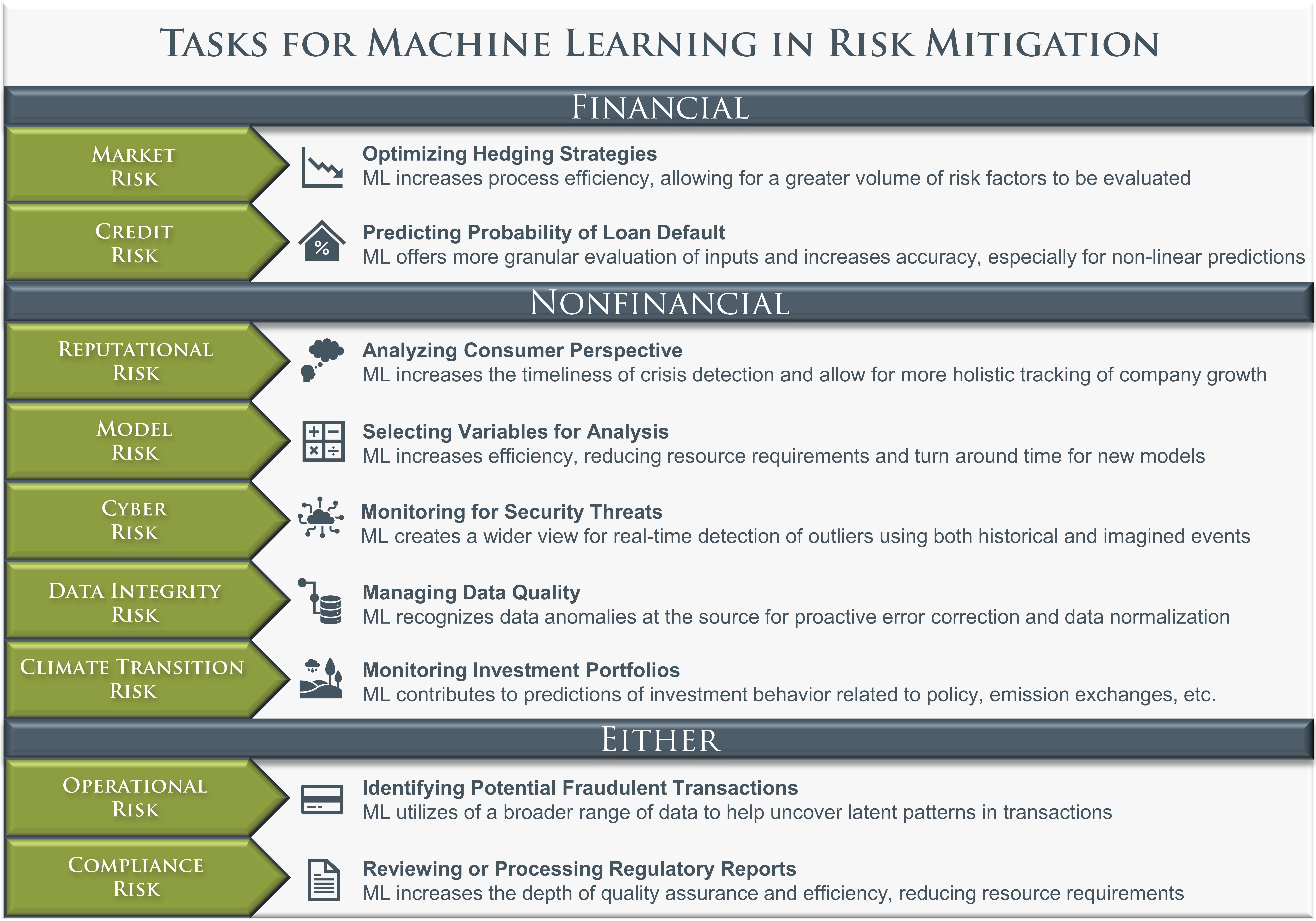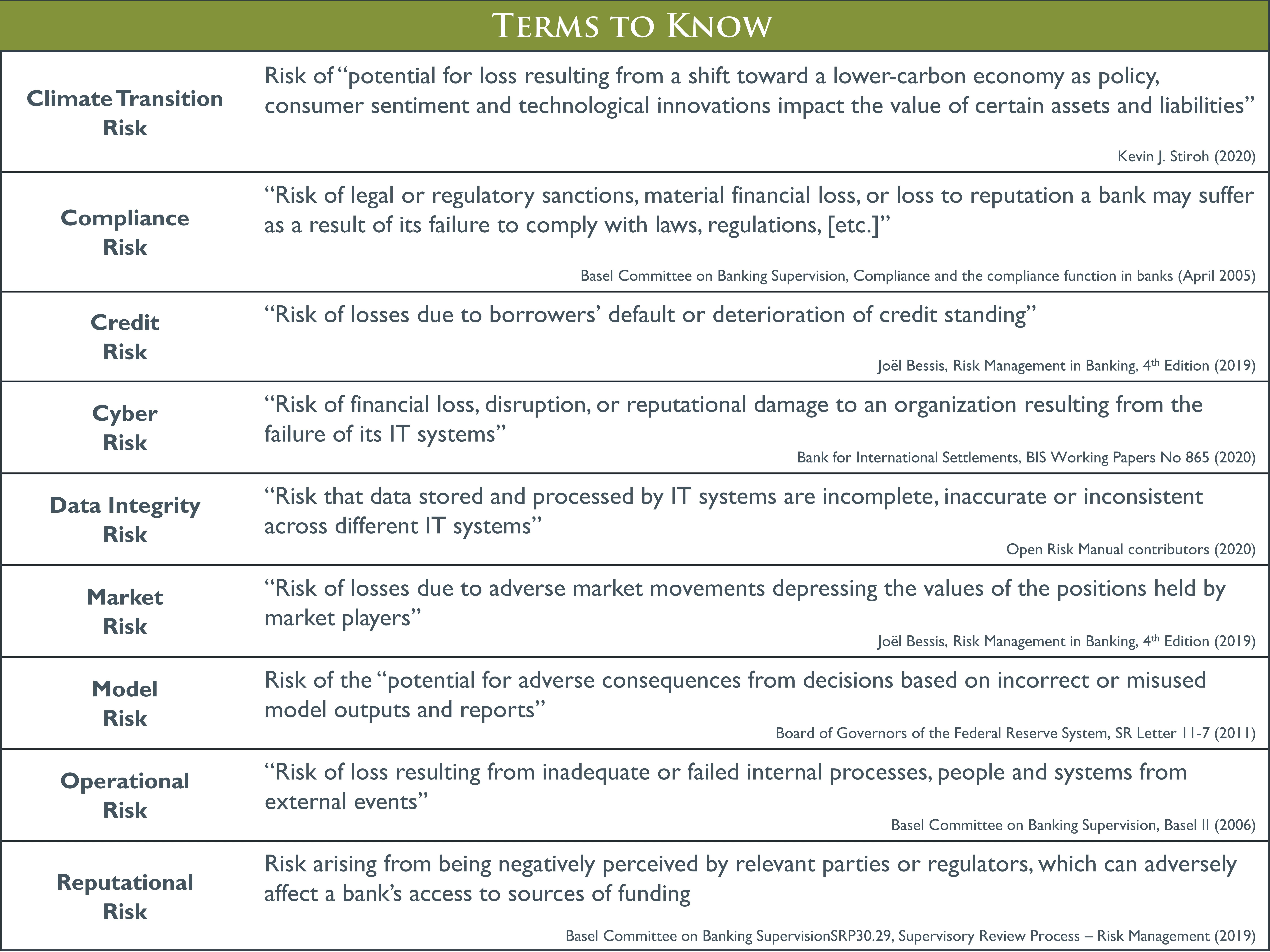Through the lens of Financial Risk, this blog series will focus on Financial Institutions as a premier business use case for Artificial Intelligence and Machine Learning.
For any application of machine learning (ML) being considered for industry practice, the most important thing to remember is that business needs must drive the selection and design of the algorithm used for computation. A financial institution (FI) must be smart about which of these advanced tools are deployed to generate optimal value for the business. For many FIs, this “optimal value” can refer to one of two categories: increasing profitability or mitigating risk. In this post, we will focus on the uses cases for ML specifically related to risk.
Risk can be broken out between financial risk and nonfinancial risk. Financial risk involves uncertainty in investment or business that can result in monetary loss. For example, when a homeowner defaults on a loan, this means the lender will lose some or all those funds.
Nonfinancial risk, on the other hand, is loss an FI experiences from consequences not rooted in financial initiatives. Certain events, such as negative news stories, may not be directly related to the financial side of the business but could deter potential customers and hirable talent. Some areas of risk may be considered either financial or nonfinancial risk, depending on the context.
When properly employed, ML enhances the capabilities of FIs to assess both their financial and nonfinancial risk in two ways. First, it enables skilled workers to do what they do best because they can off-load grunt work, such as cleaning data, to the machine. By deploying a tool to support existing (and cumbersome) business operations, the analyst has more time to focus on their specialty. Second, a machine has the technical capability to reveal nuance in the data that even a specialist would not be able to do alone. This supplements the analyst’s understanding of the data and enriches the data’s worth to the business.
The image below elaborates on the many kinds of risk managed by an FI, in addition to practical ways ML can supplement existing methods for risk mitigation.
More complex algorithms may do a better job of fitting the data, model at a higher capacity, or utilize non-traditional types of data (e.g., images, voice, and PDFs, etc.), but this all comes at a cost. The intricacies of implementing an ML algorithm, the commitment of time required to build a model (i.e., tuning hyperparameters can take days), and the management of unintended bias and overfitting render ML a considerable investment of resources. Not to mention, the robust requirements for computational power may require an FI to do some pre-work if a stable and capable infrastructure is not already in place.
As innovative as ML can be, any process will only be successful in industry if it produces value beyond its costs. Thanks to advances in computational power and available data, new approaches (e.g., neural nets) have broadened the universe of ML and its relevance, as well as better enabled traditional methods of ML (e.g., time series models). We will expand more on specific algorithms and risk mitigation use cases in later discussions.
Interested in reading more? Subscribe to the FRG blog to keep up with AI in FIs.
Hannah Wiser is an assistant consultant with FRG. After graduating with her Master’s in Quantitative Economics and Econometrics from East Carolina University in 2019, she joined FRG and has worked on projects focusing on technical communication and data governance.


